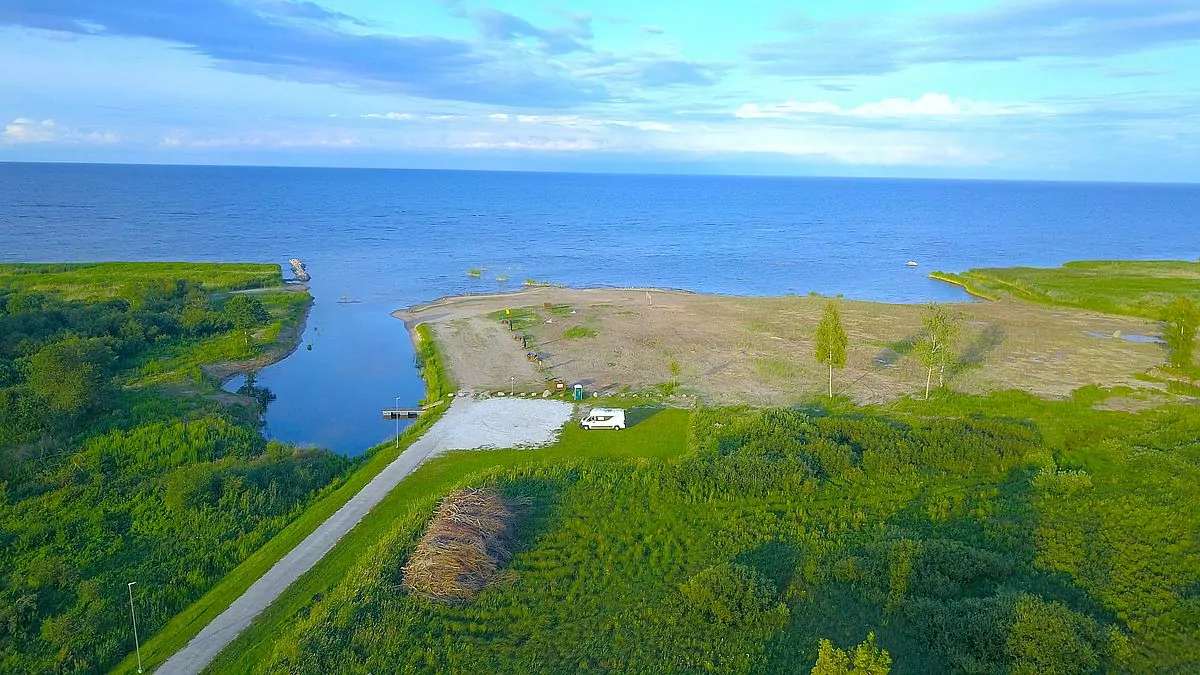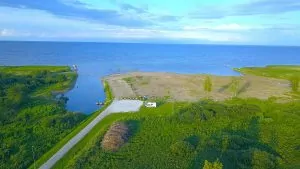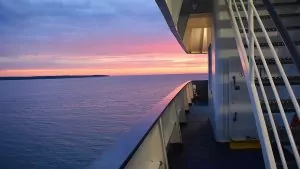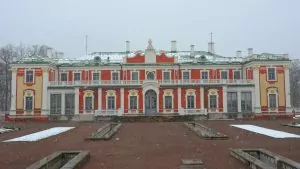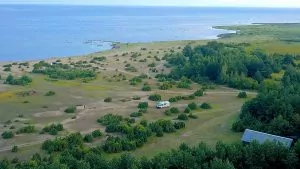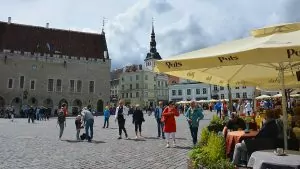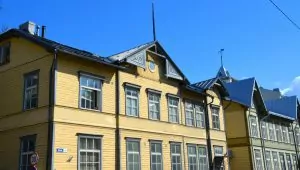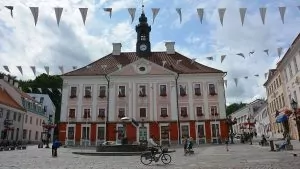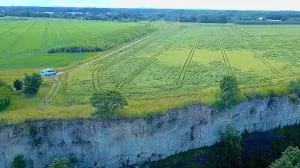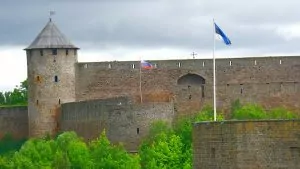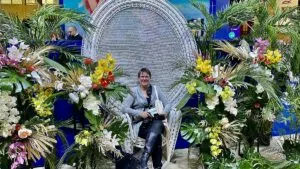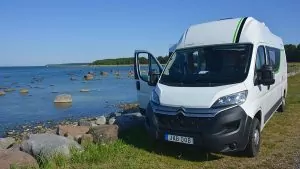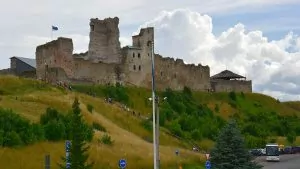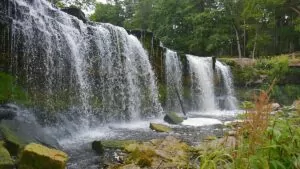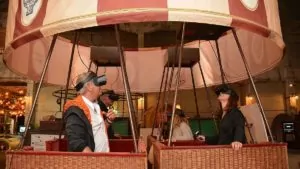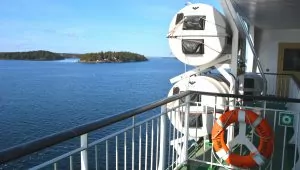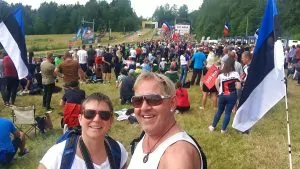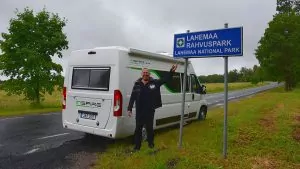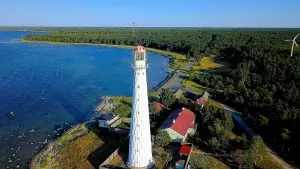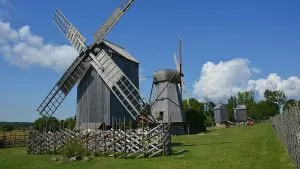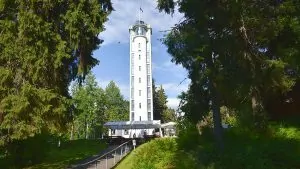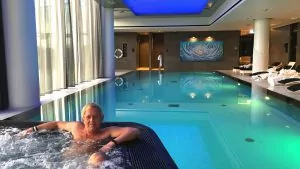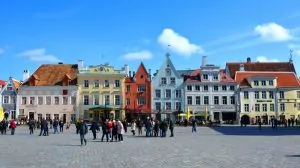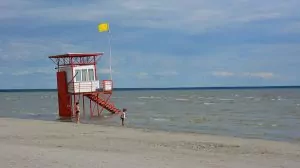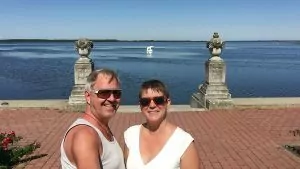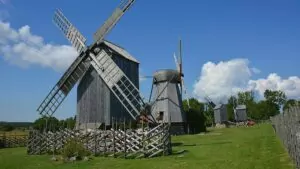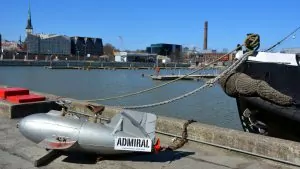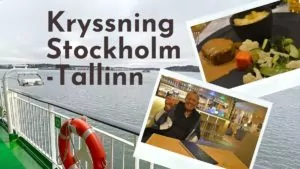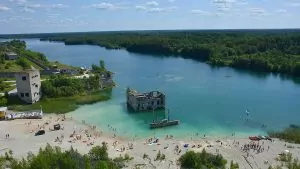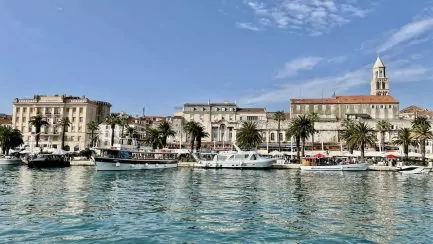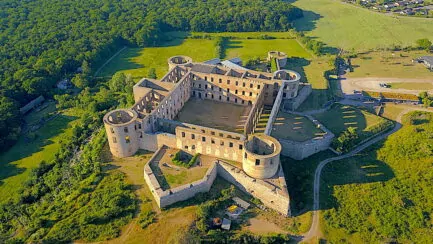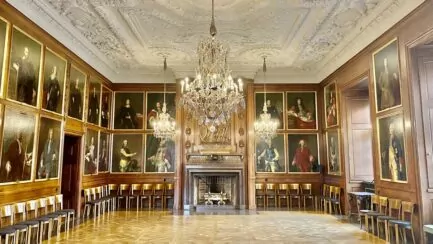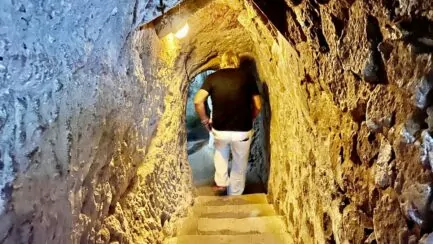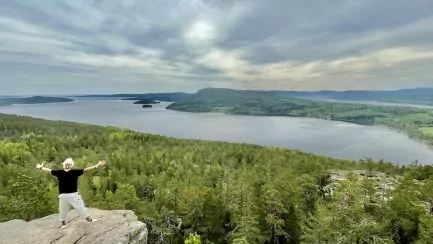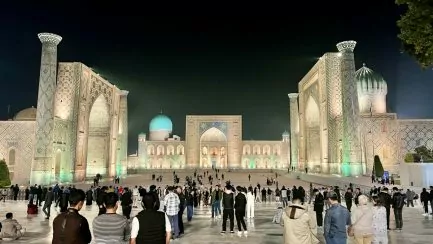What to see and do in Estonia? We offer 30 tips for a country with beautiful nature, many attractions and a Swedish history that runs like a thread through the country and its islands. Join us in Estonia!
Table of contents
What to do in Estonia - our top tips
There is so much to discover, see and do in Estonia. A year or so ago we travelled around the whole country by motorhome, and we've also visited Tallinn several times. Here we have gathered our best tips.
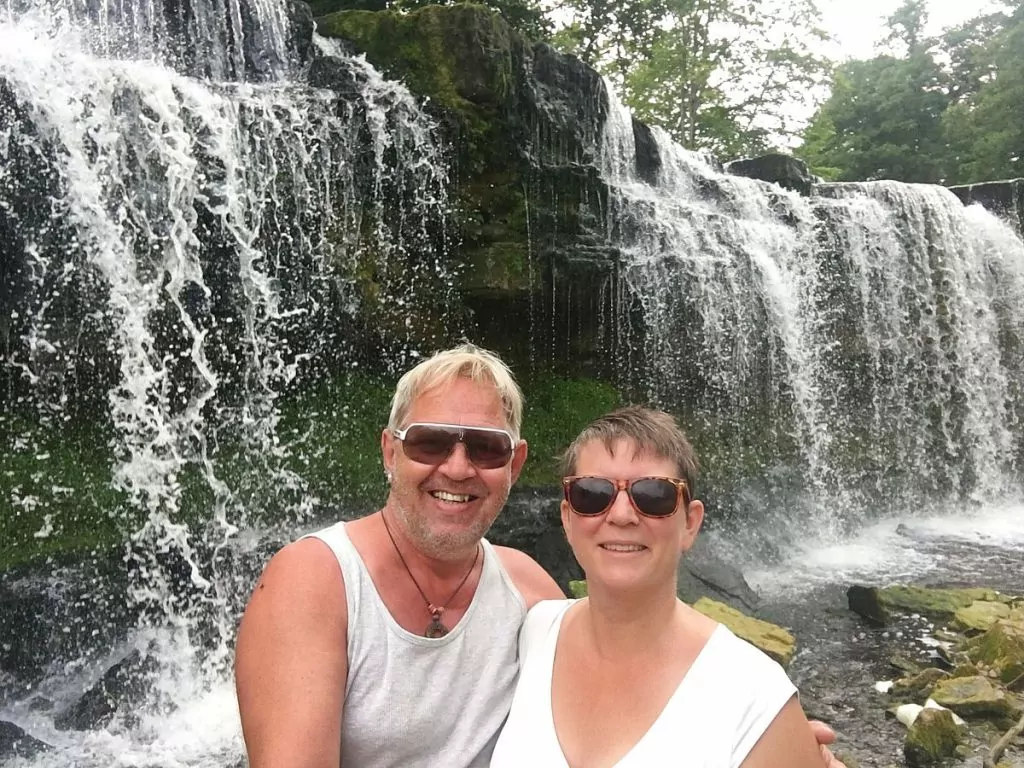
1. Stroll around historic Tallinn
Estonia's capital Tallinn is an enchanting city with a rich history, medieval charm and 1800 metres of medieval wall. Its beautiful old town centre, with cobbled streets and Gothic buildings, takes visitors on a journey back in time. The old town has also been a UNESCO World Heritage Site since 1997.
Some places to check out include the narrow Katariina käik street, the medieval Town Hall Square, the world's oldest pharmacy dating back to 1422, the Cathedral Hill, Alexander Nevsky Cathedral and the Kalamaya neighbourhood.
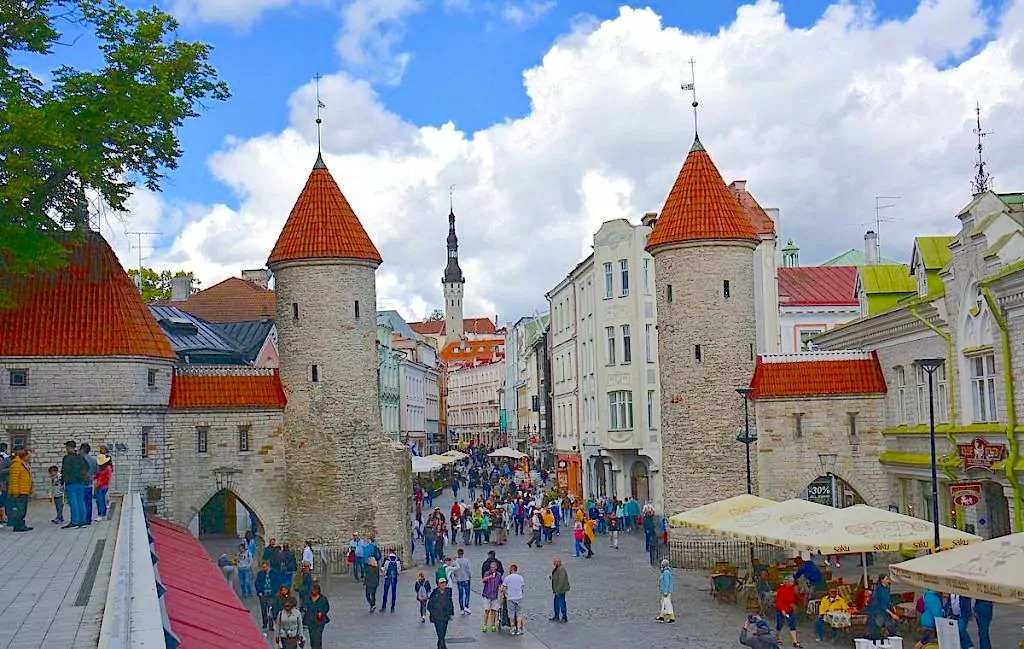
2. Luxuriate in a hotel and spa in Tallinn
In Tallinn there are several hotels with a luxury feel, where you can also enjoy the spa and pool baths. Hilton Tallinn Park hotel is an example of a nice hotel with very good food, a large breakfast buffet, gym, casino and spa.
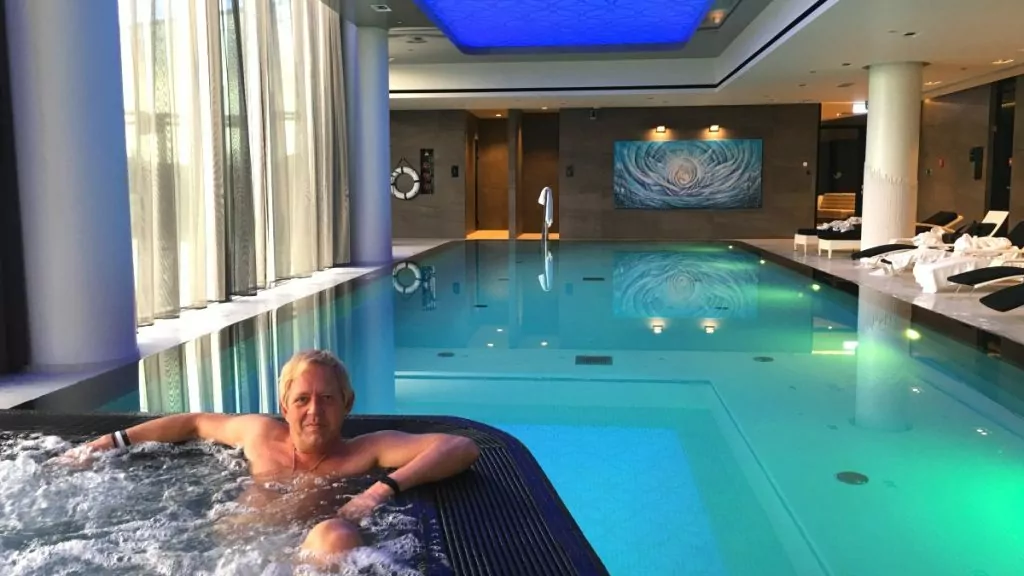
3. Have fun at the Proto discovery workshop.
Proto Discovery Workshop is an exciting experience centre in Tallinn that takes visitors on a journey through early technological advances. Here you can explore and experience wonders such as submarines, steam locomotives and hot air balloons. By using virtual reality goggles, visitors can make fantastic journeys into the world of imagination.
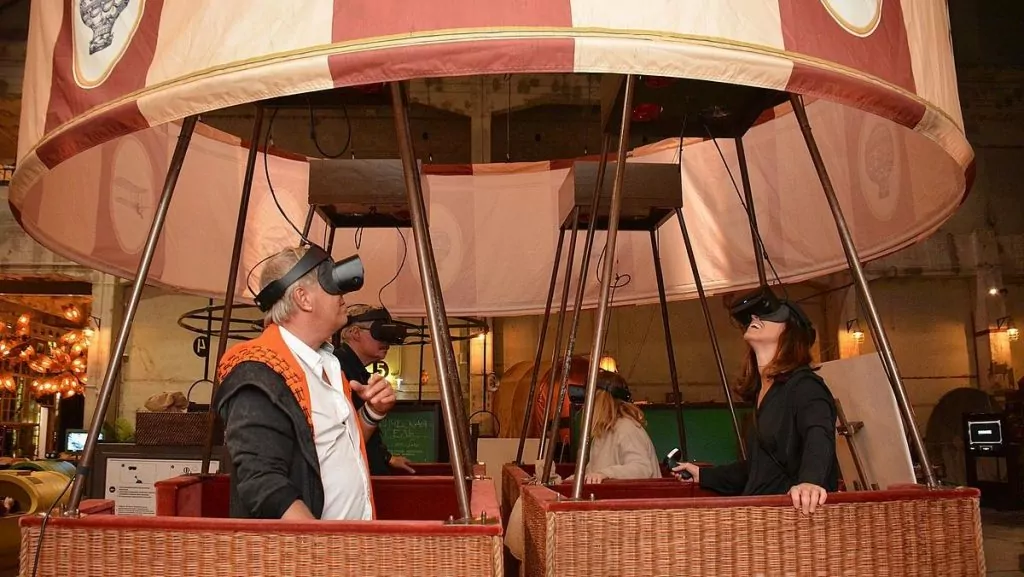
4. Visit the Kadriorg Palace
Kadriorg Palace is located in the Kadriorg district, just outside the centre of Tallinn. The palace was built in the Baroque style in 1718-1725, during the reign of Peter the Great, and was intended to be used as the summer residence of Empress Catherine I. After World War II, the palace became an art museum. After the First World War and Estonia's independence, the palace became an art museum. Then it became the Presidential Palace, and then it became an art museum again. The palace can be visited inside, where you can see beautiful palace rooms and art exhibitions.
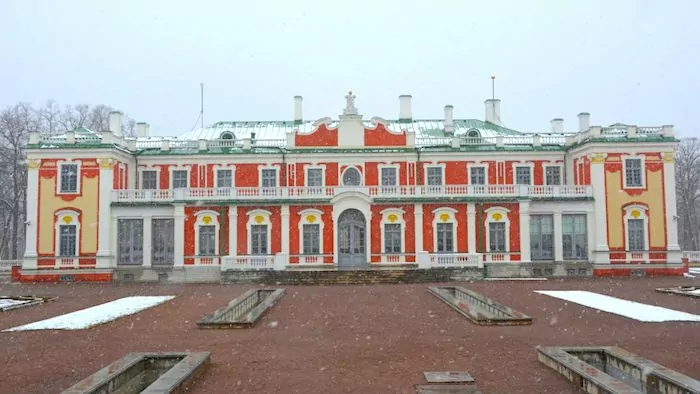
5. Take a selfie at Jägala waterfall or Keila waterfall.
Located 35 kilometres from the capital Tallinn, Jägala Falls is the largest waterfall in the Baltics, with a drop of 8 metres and a width of 70 metres at its widest. Even when it's not at its best, it's great to stand next to the roar and splash of the falls.
Speaking of waterfalls, Keila Waterfall is located southwest of Tallinn in the village of Keila-Joa and is the third largest in the country, 6 metres high and 65 metres wide. There is a romantic park by the waterfall and a beautiful mansion next to it that also serves as a hotel.
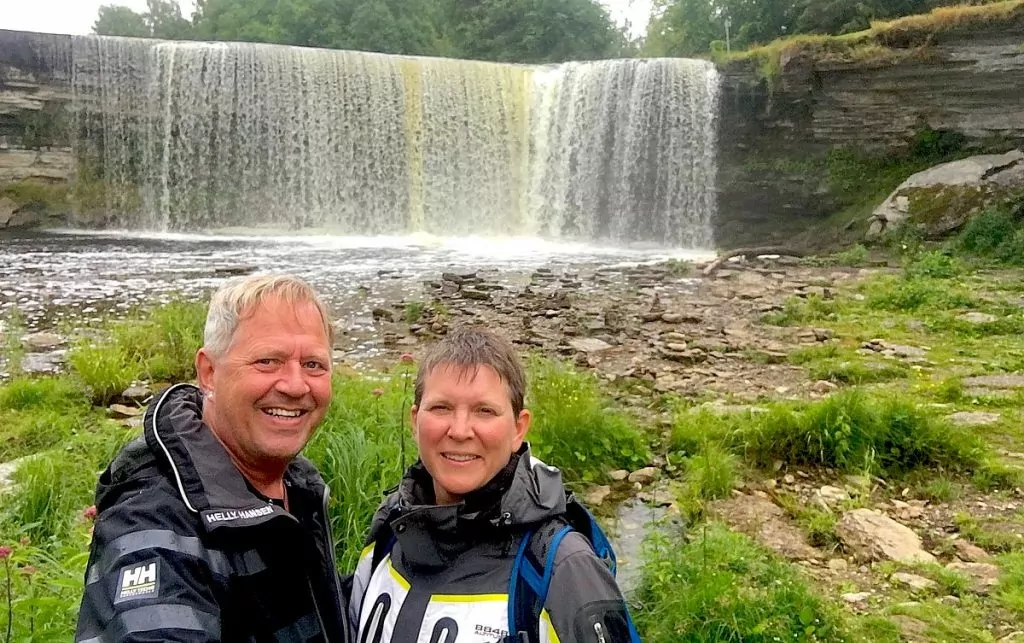
6. Experience Lahemaa National Park
Lahemaa National Park, or Lahemaa Rahvuspark as the park is called in Estonian, is known for its beautiful nature with hiking trails on wooden walkways, but also for its fine old mansions. We stopped at Kolga mõis, the Kolga mansion, which belonged to the Stenbock family and was huge, like a small castle. There is a lot of Swedish history here.
You can also go to the beautiful mansions of Palmse mõis and Sagadi mõis, where you can also experience beautiful castle gardens. Other places to visit are the captain's village Käsmu, the fishing village Altja and Võsu, where there is a nice beach.
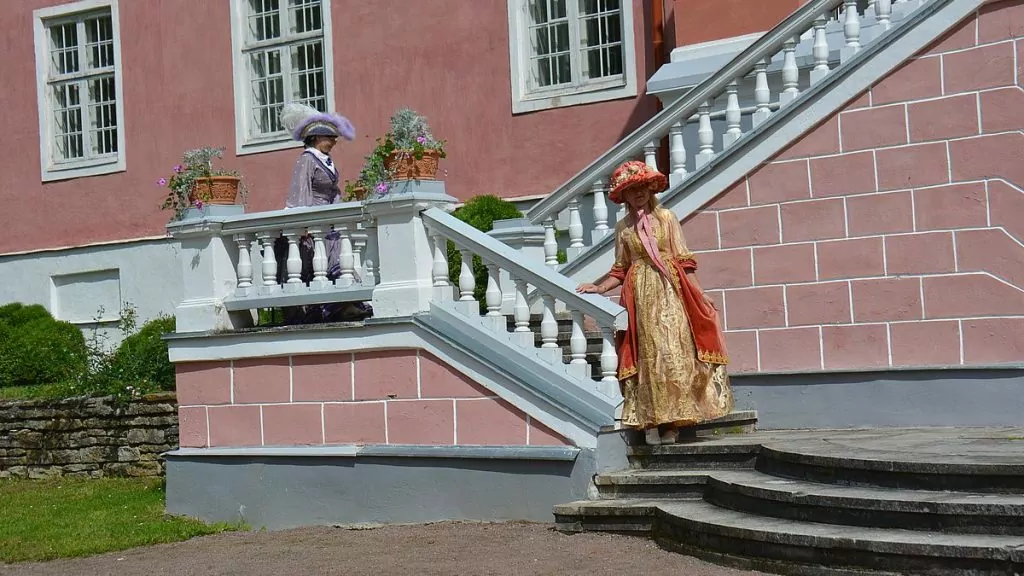
7. Fascinated by the cliffs of Ontika
The cliffs of Ontika in Estonia are dramatically steep rock walls that plunge 55 metres straight into the sea, and can also be called the 'cliff coast of Ontika'. Head to Valaste and a car park to find the steps down the steep cliff face and take a lovely walk along the beach.
Fifteen minutes from Ontika is a large, beautiful and well-maintained castle park called Oru Park in Toila. A castle once stood here, which was the summer residence of President Päts, but during the Second World War it was bombed to pieces. However, there is still plenty to see in this well-maintained park, which is one of our favourite things to do in Estonia.
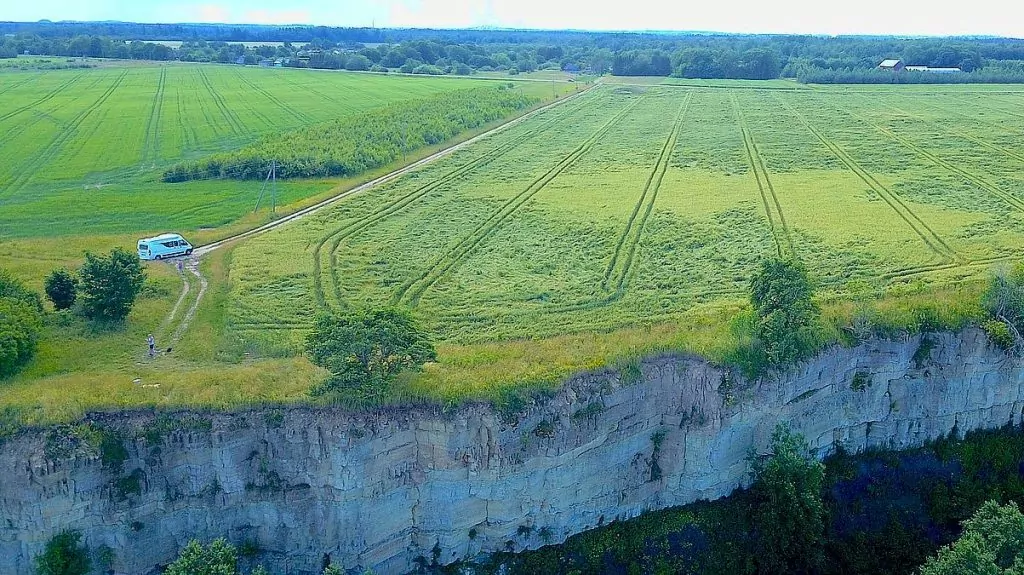
8. Travel through time at Rakvere Fortress
Located on a hill in the town of Rakvere in northern Estonia, the 13th century Rakvere Fortress once belonged to both Denmark and Sweden. Today, the fortress is a popular tourist attraction for the whole family, and inside the castle there are activities and plays that take children and adults alike back to the 16th century.
How about a restaurant, chapel, torture chamber, prison, alchemist's workshop, wine cellar, knights, archery, horses, carriages, clucking chickens, gallows for hanging, brothel and more.
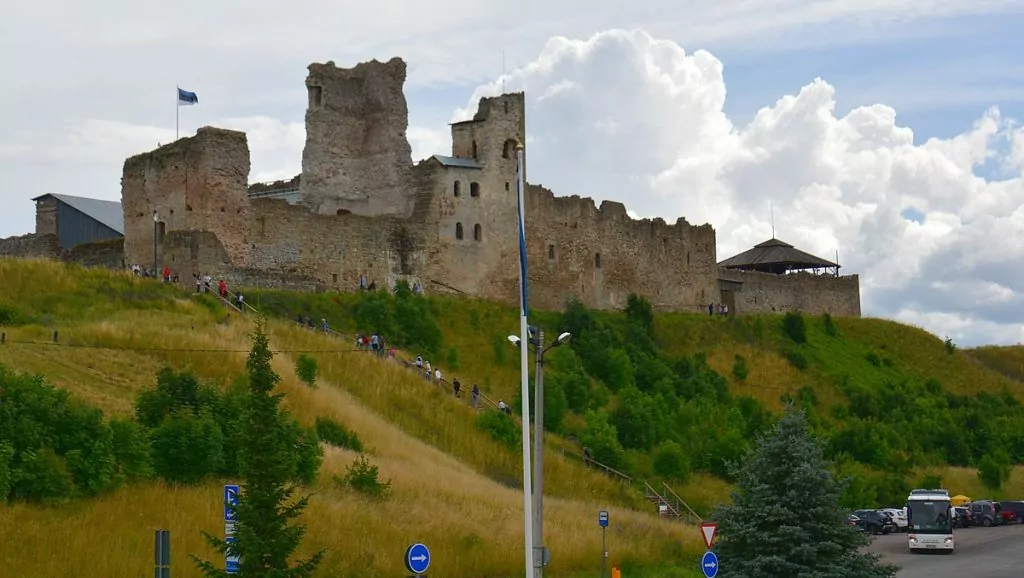
9. Take a historical excursion to Hermannsborg in Narva.
When visiting Hermannsborg in Narva, which is also the last outpost and border with Russia, you should also visit the Narva Museum. The price includes a visit to the courtyard and a walk up the tower, known as Long Hermann. A lot of the history is linked to Sweden and many of the signs and inscriptions are in Swedish, which makes the visit extra fun for a Swede.
At the top of the tower you can see the Russian fortress of Ivangorod, which is so close you can almost touch it. Also visit the Victoria Bastion and see the Swedish lion that symbolises the Battle of Narva 300 years ago.
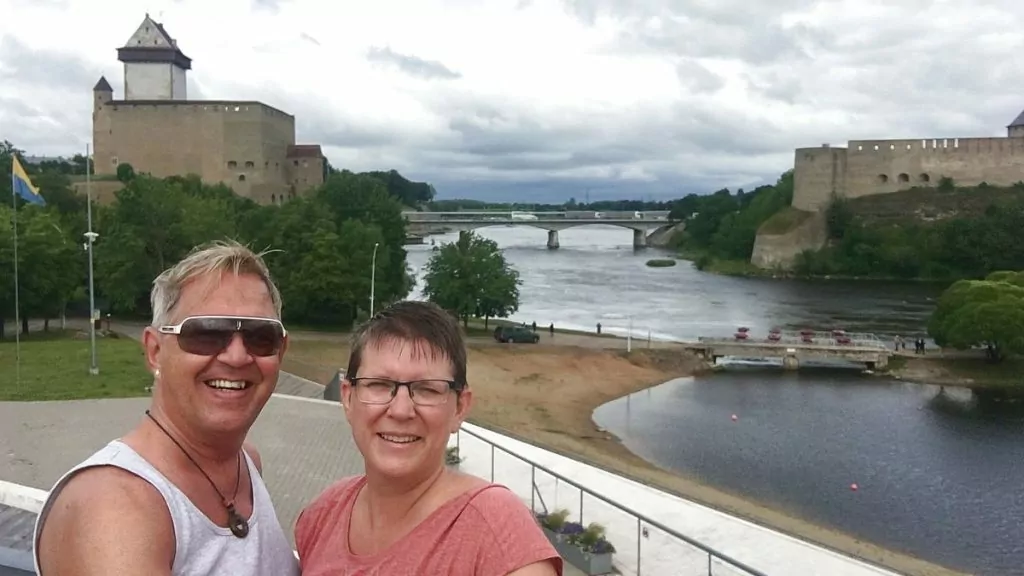
10. Admire the city of Tartu
Tartu is a thriving university town located in south-eastern Estonia. With its rich history dating back to the Middle Ages, when it was called Dorpat, the city offers a fascinating mix of old and new. The youthful atmosphere of Tartu is evident with its active university and vibrant nightlife.
You can check out the sights on Toomemägi (Cathedral Hill) such as the Bishop's Cathedral, Tartu Observatory and the Monument to Johan Skytte, advisor to Gustav II Adolf and initiator of the University of Estonia in 1632. It is also nice to explore the Town Hall Square, have a coffee at Café Werner, drink a beer at Püssirohukelder or visit the National Museum of Estonia.
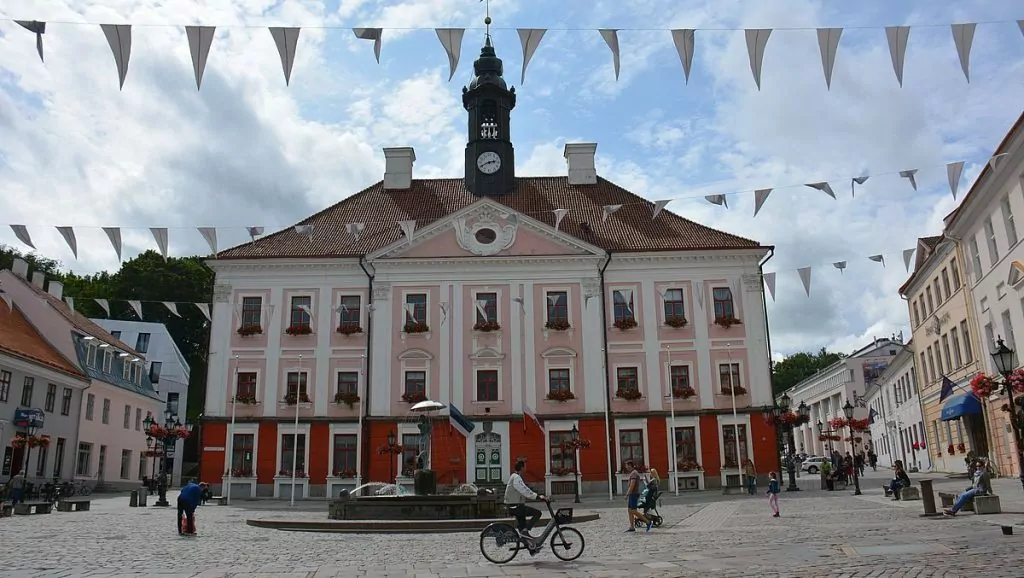
11. Experience the folk festival and annual rally in Tartu
Rally Estonia in Tartu is a fantastic festival in July every year, attracting a large number of Estonians. We enjoyed a wonderful sunny day while watching rally cars and even rally trucks (!) jumping, skidding and sometimes almost losing control of the road in their intense endeavour to reach the finish line as quickly as possible. In the centre of Tartu, there were helicopters, fancy cars, artists performing, fireworks, triathlons and yes, all the trappings of a folk festival.
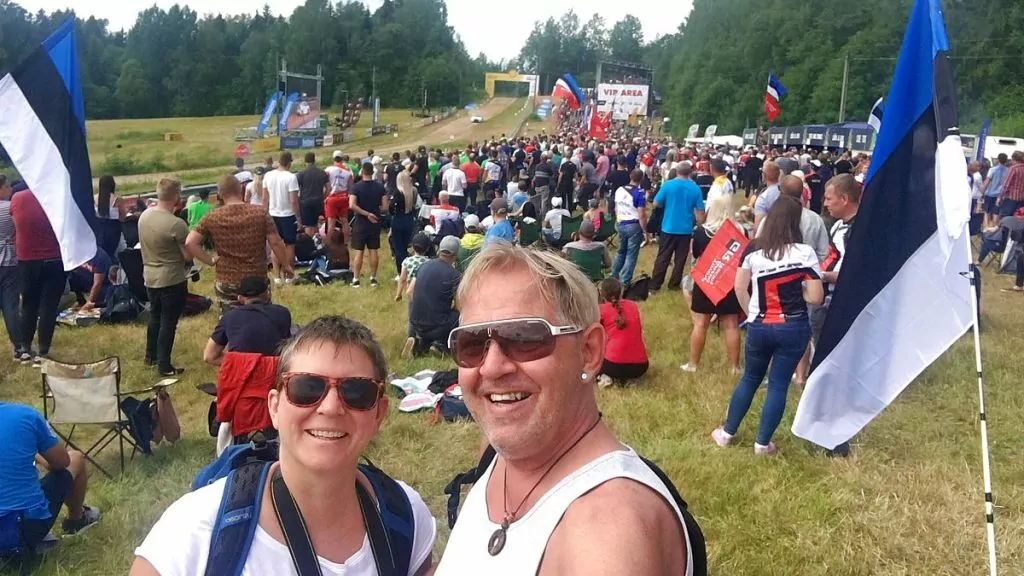
12. Visit the Modern National Museum of Estonia
Just outside the centre of Tartu is the National Museum of Estonia. This new museum, opened in 2016, is housed in an impressive building with a magnificent entrance. Here visitors can explore Estonia's folk history, way of life and traditions.
One exhibition we particularly appreciated was the one on the cultural history of the Finno-Ugric peoples, presented in a modern and beautiful way with many interactive elements. The National Museum of Estonia offers a fascinating and enriching journey through the country's cultural heritage.
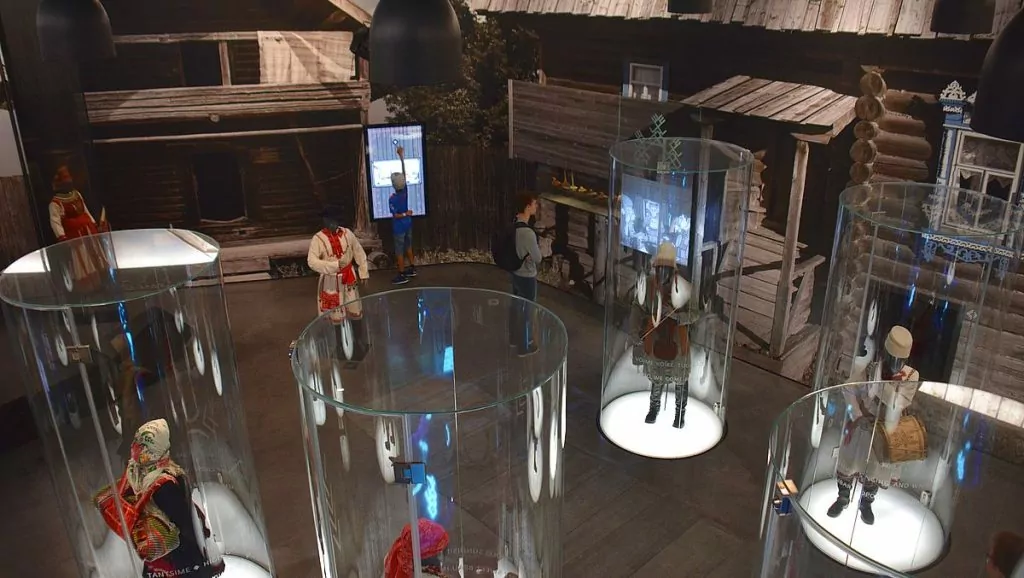
13. Learn about the Old Believers at the Pepsimaa museum
Peipsimaa Museum is a museum that tells the story of the Old Believers in Estonia. The museum is located in Tiheda, just south of Mustvee, by Lake Peipus. Many people living around Lake Peipus belong to the Old Believers, or raskolniks as they are also called. They are the descendants of the Orthodox Christians in Russia who refused the new order in 1666. Around 30,000 fled to Estonia and were allowed to live on the poor land around Lake Peipus. Old Believers almost always wear black clothes and follow strict diets.
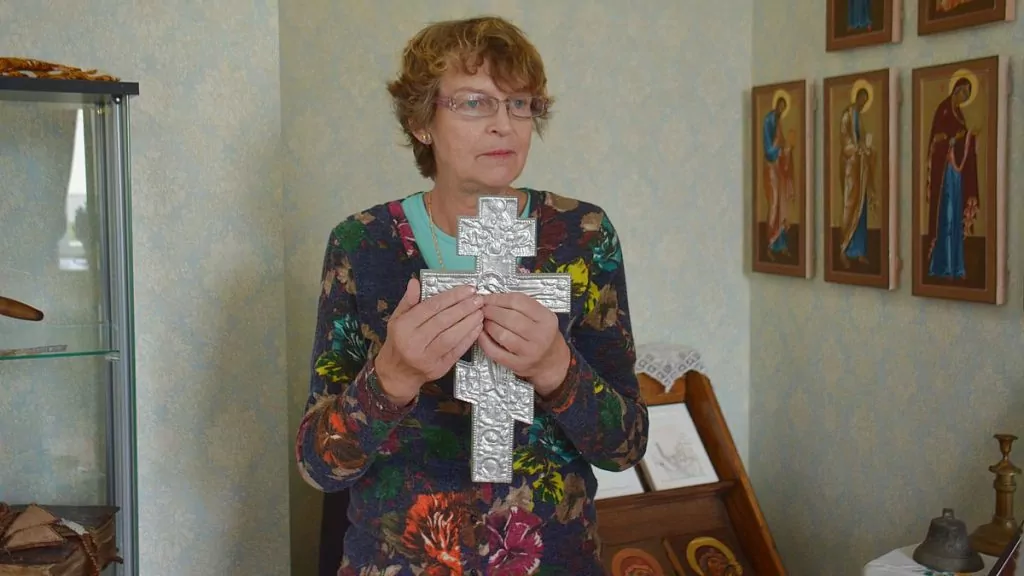
14. Fishing in Lake Peipus
Lake Peipus is Europe's fifth largest lake and is a great source of fish. The lake has a maximum depth of 7 metres and is home to 36 different species such as perch and pike-perch, as well as endemic fish found only here.
At Peipu's fish kiosk you can try freshly grilled vendace straight from the oven, as well as pike caviar and perch prepared in the traditional way by the Old Believers. The area also offers other delicacies such as soups, pies and various fish and root vegetable dishes.
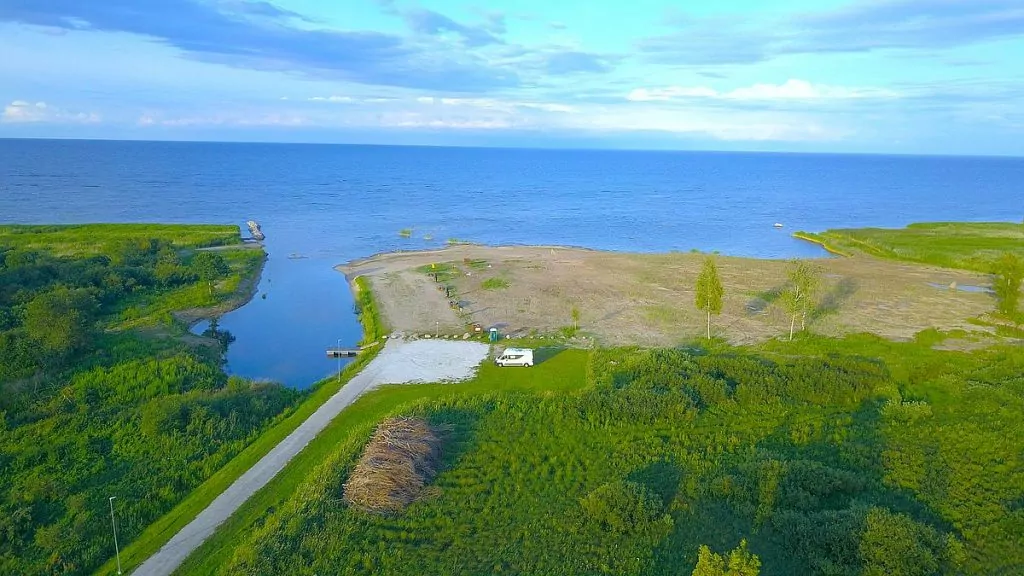
15. Visit an onion farmer on the Onion Road in Estonia
At Lake Peipus there are plenty of onion growers. The onion grows well in the wet soil and also tastes different from other onions. However, making a living from onion farming is difficult today, and many young people move to Tartu to study or find other jobs. Nevertheless, the onion farms are thriving. Here you can buy onions directly from the onion farmers, or perhaps get a chance to try their onion soup or onion pies.
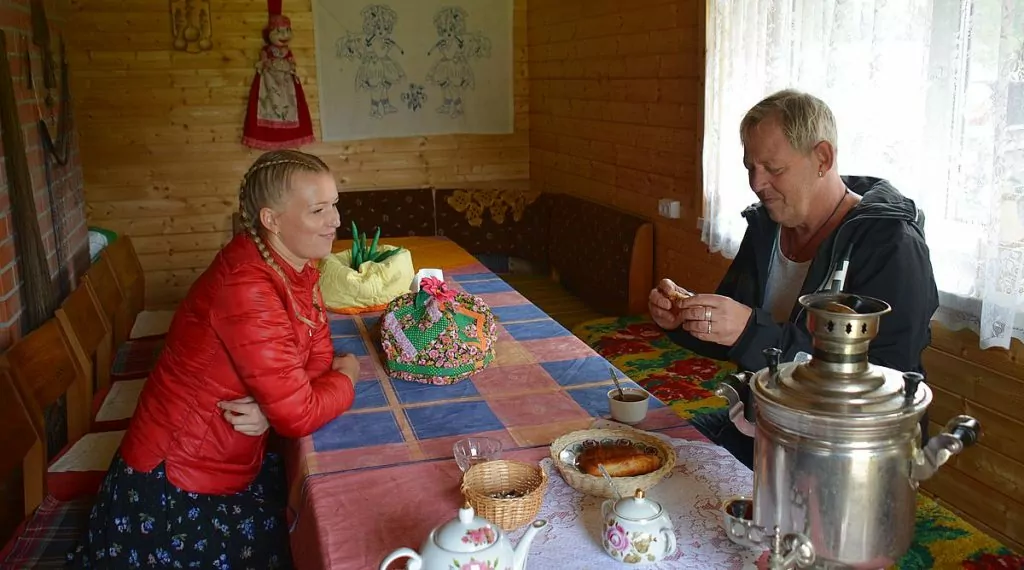
16. Step inside Alatskivi Castle
Alatskivi Castle on Lake Peipus, built in 1885, is inspired by the Tudor style and the famous Balmoral Castle in Scotland. The castle was built by local landowner Arved von Nolcken as a love gift to Josephine, and it served as their family residence.
Today the castle houses a visitor centre and also offers overnight accommodation, including ghost dinners. On the second floor is a museum dedicated to Estonia's most famous composer, Eduard Tubin, where you can explore his life and works. Nearby is the Kivi kõrts inn.
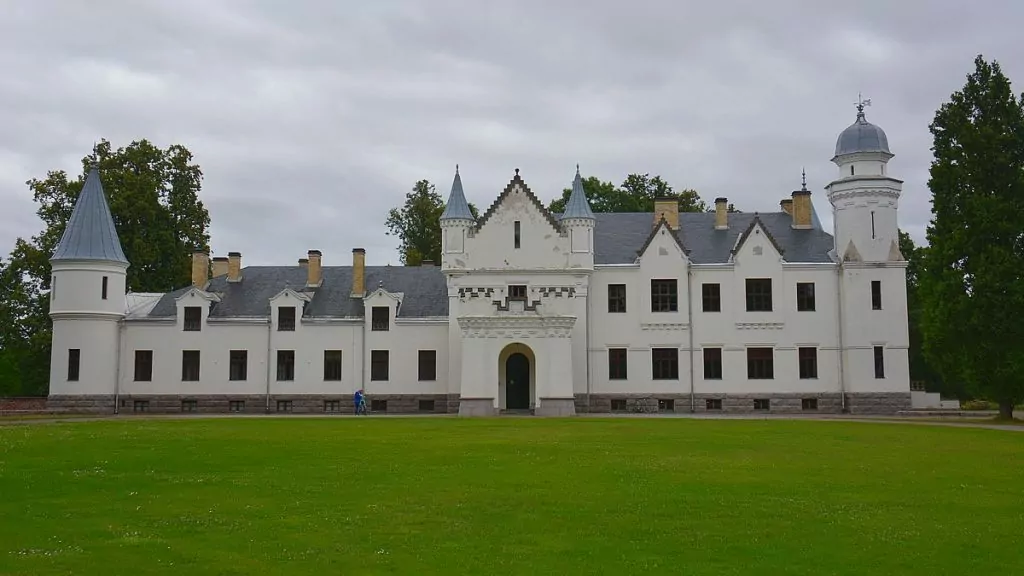
17. Climb the highest mountain in the Baltics - Suur Munamägi
Climbing the highest mountain in the Baltics, Suur Munamägi, takes no more than 10 minutes, and it's a must-do once you've made it. The mountain is 318 metres high and the car park is 60 metres from the top. There is a lookout tower at the top if you want an even better view.
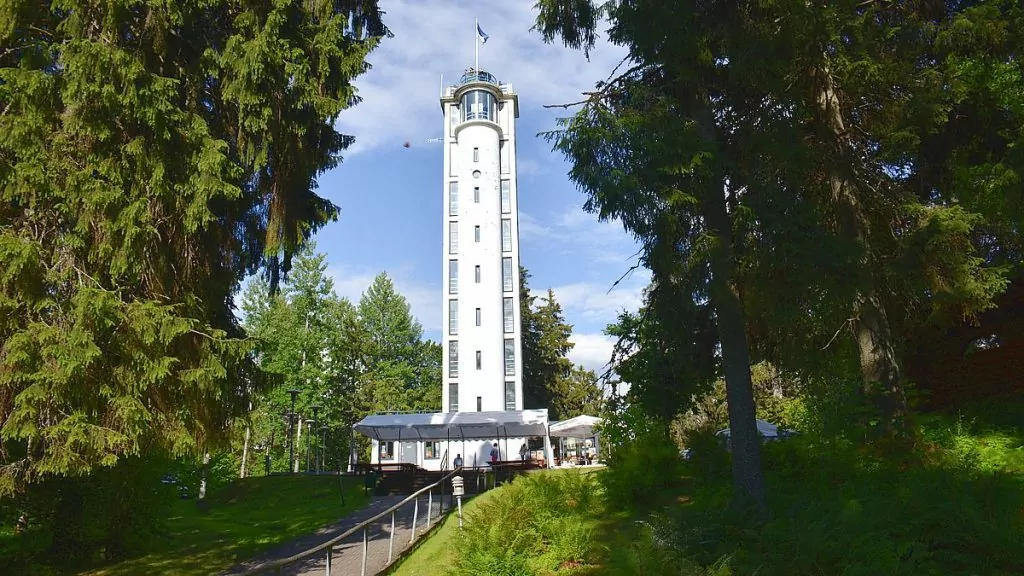
18. Sunbathing and swimming in Pärnu
Pärnu beaches are a paradise on the Baltic Sea coast, with soft fine sand and shallow beaches. There are also beach bars and restaurants here, and it's not hard to see why it has become so popular.
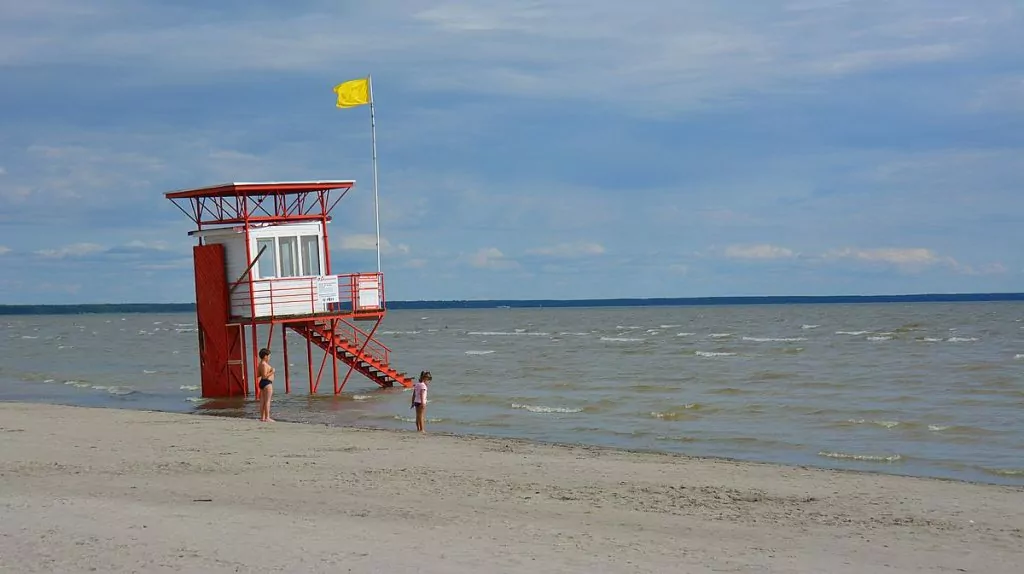
19. Experience mud bath, spa and sauna in Pärnu
The history of the spa dates back to 1838, when baths and saunas were first offered in both summer and winter. After the Soviet era, the "Pärnu Mudarvila" bath was closed, but in 2014 a boutique spa opened in the same building.
Besides this, there is also the ESTONIA Resort Hotel & Spa, a spa well worth a visit. A tip is to walk around Pärnu because the city has many beautiful old turn-of-the-century houses and it is good for the soul just to take part in them.
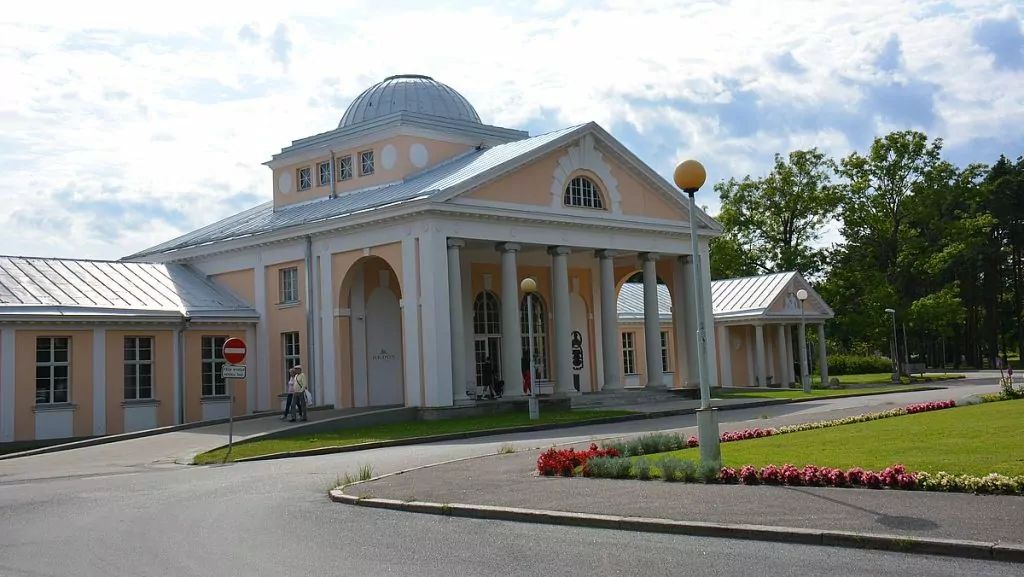
20. Dine at beautiful Villa Ammende in Pärnu
Among the many villas in Pärnu, Villa Ammende stands out with its unique character. Built in 1905, the villa once belonged to a merchant named Ammende and is an excellent example of Estonia's best Art Nouveau style. Between 1927 and 1935, the villa served as a casino and during World War II it was used as a club.
After an extensive renovation, a hotel and restaurant was opened in the villa in 1999. Here you can experience the Art Nouveau environment and enjoy gourmet dishes such as ostrich starters or lamb baptism for starters, and duck with pea puree or fish with rum and quail eggs for the main course.
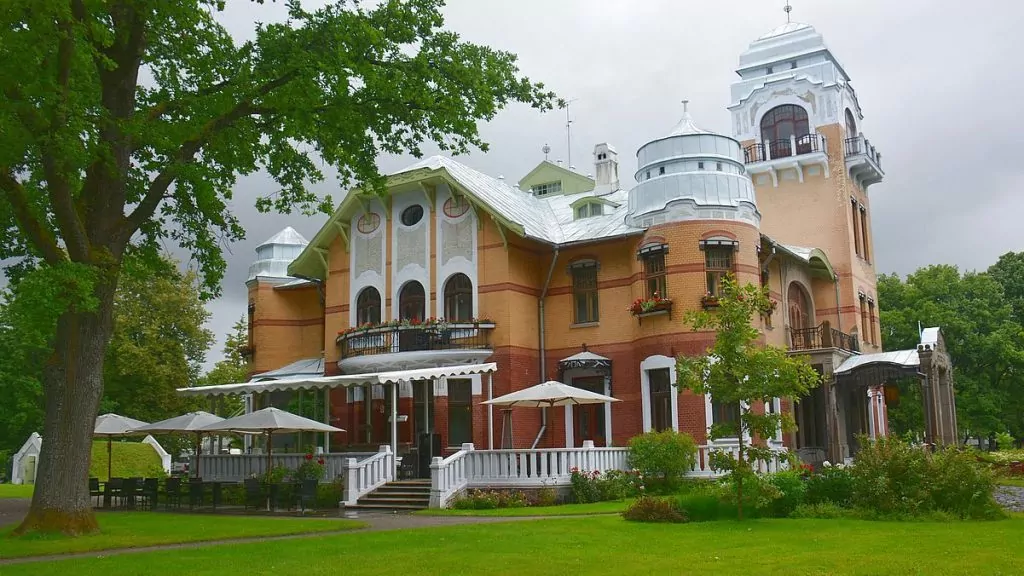
21. Discover the women's island of Kyno
Kynö, or Kihnu in Estonian, is a small and very special island. Its traditional culture is one of humanity's intangible cultural heritage. Here, women rule by tradition and the island is considered Europe's last matriarchy, with women wearing folk costumes and riding motorcycles with sidecars. The men were sailors and were away for long periods of time, leaving the women to take care of everything. Visit the museum to understand the traditions and history.
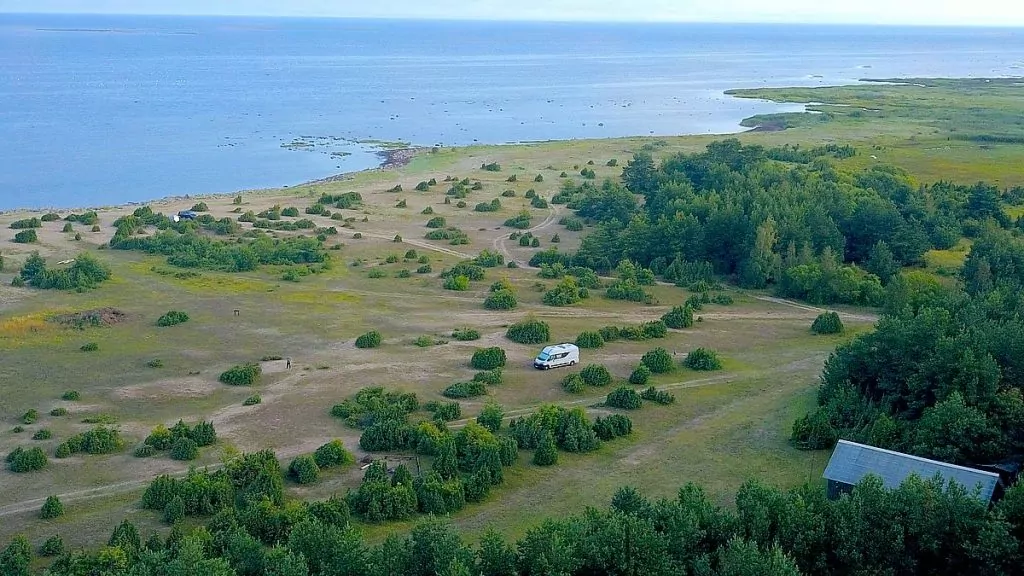
22. Take the ferry to Saaremaa
Saaremaa is the largest of the Estonian islands. You take a ferry from Virtsu on the mainland. On the island of Moon (Muhu), which is connected to Saaremaa by a bridge, there is a hotel called Pädaste Manor, along with a nature area and spa.
On the island of Saaremaa itself, you can see the Kaali meteorite crater, a remnant of the meteorite that struck 7500 years ago. More to do in Estonia, on the island of Saaremaa, is to discover Panga Pank or Panga Cliffs, a 22-metre high limestone cliff, 2.5 kilometres long.
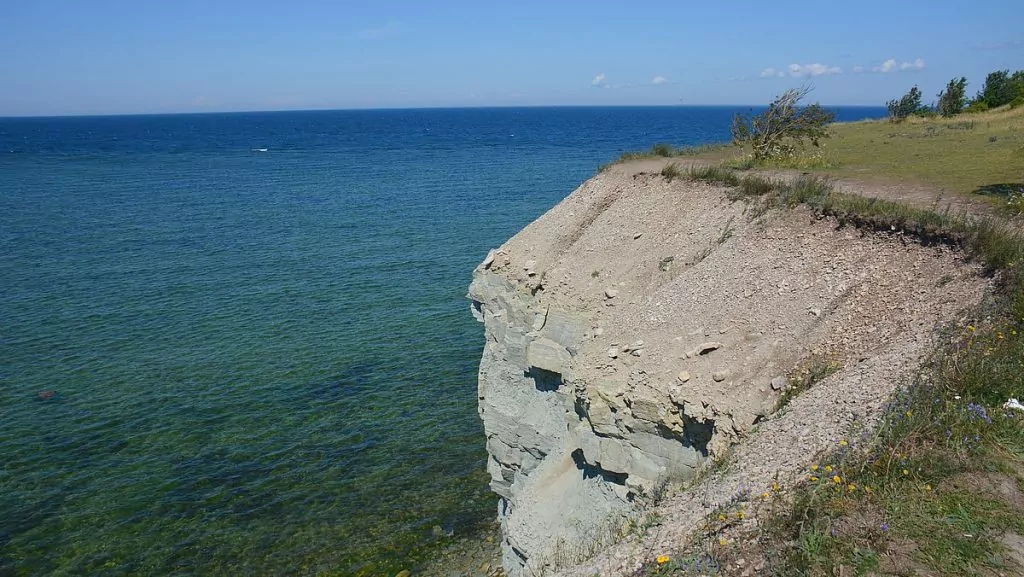
23. Check out the windmills at Angla Windmill Hill.
The island of Saaremaa is known as the island of windmills, and seeing the Angla windmill hill is almost a must. Here you'll find five windmills, four of which are characteristic 'stump mills' typical of Saaremaa. In the centre of the hill stands a Dutch cap mill built in 1927.
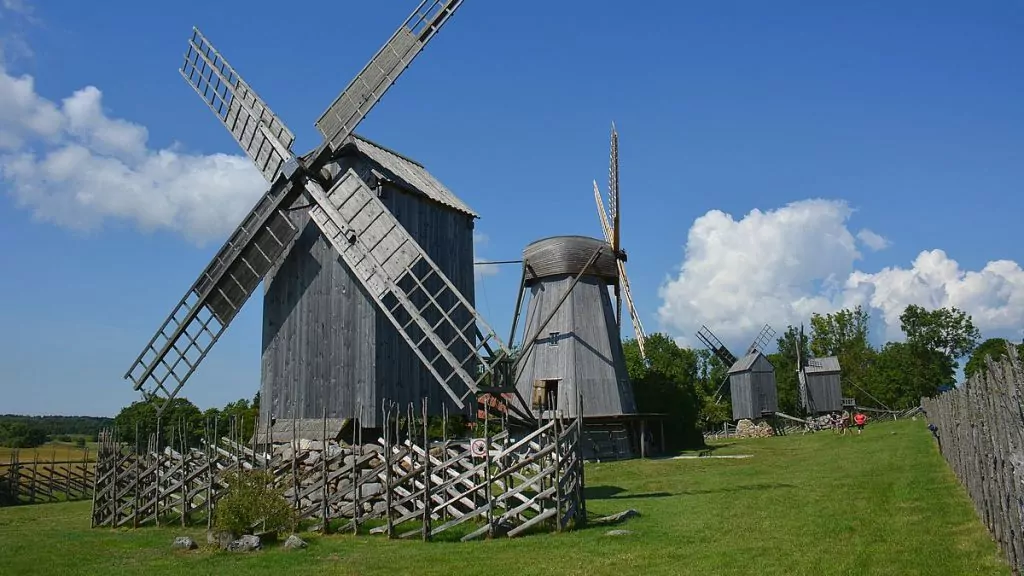
24. Impressed by Kuressaare Bishop's Castle
Kuressaare Bishop's Castle, also known as Kuressaare Castle, is one of Estonia's most well-preserved fortresses. The impressive building, built between the 14th and 19th centuries, is surrounded by massive walls and moats, and adorned with powerful towers.
According to a legend, in 1785 an architect discovered a walled room. The room contained a table, a chair and a skeleton. According to the story, the skeleton belonged to a knight who is said to have been walled in alive in the 16th century. The knight is said to have taken a vow of celibacy, but when a young woman was sent to him as a test, the story ends with her being sent to a monastery and him being walled up.
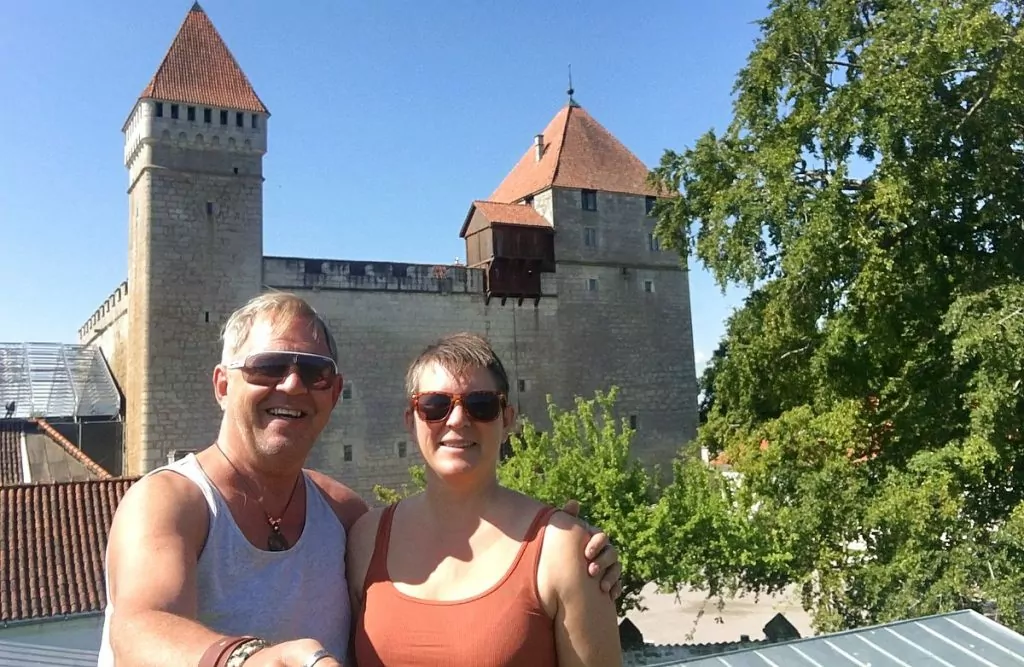
25. Experience the amazing island of Dagö
Dagö, or Hiiumaa as the island is called in Estonian, is a very beautiful island, reached by ferry. An interesting place to learn more about Swedish history is Kärrdal (Kärdla), which was mentioned as early as 1564 as a Swedish settlement. Visit the museum for more information and go to the café next door for a rhubarb soda.
If you want to experience something really special, head to Dagö's Eiffel Tower. Jaan Alliksoo has built a private park filled with spaceships, mazes, lighthouses, castles and pirate ships. The Eiffel Tower beats all and can be climbed at your own risk.
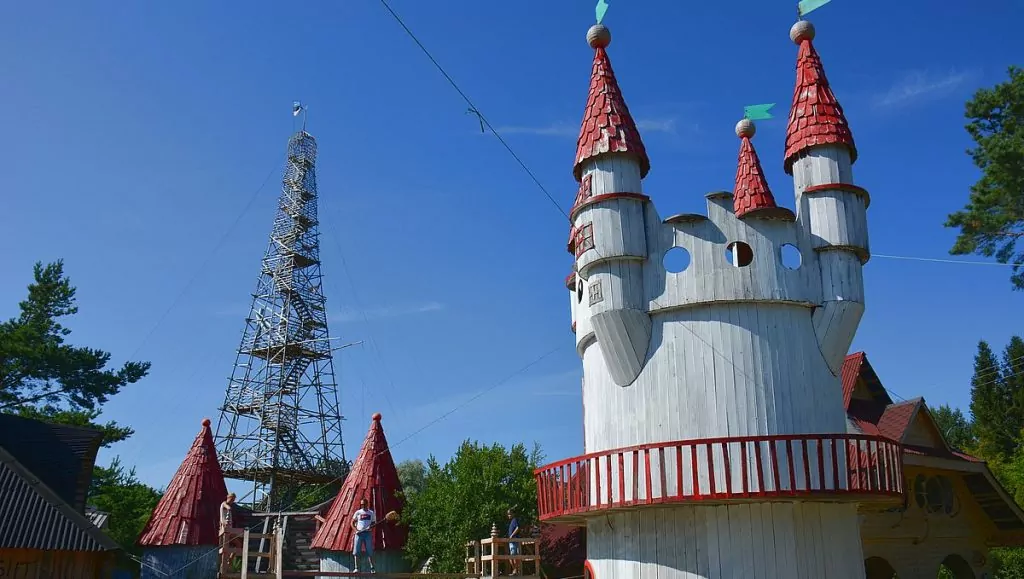
26. Climb all the lighthouses on Dagö.
There are three major lighthouses on Dagö. In the far north is the Tahkuna lighthouse, which Tsarist Russia bought in Paris at the World Fair in 1871, and which began construction in 1873. To the far west is the Ristna lighthouse and to the east is the oldest Kõpu lighthouse in the Baltics. The lighthouse was built more than 500 years ago when the Hanseatic League needed a landmark at sea. It stands at 67 metres on the highest point of Dagö and was originally equipped with a fire at the top.
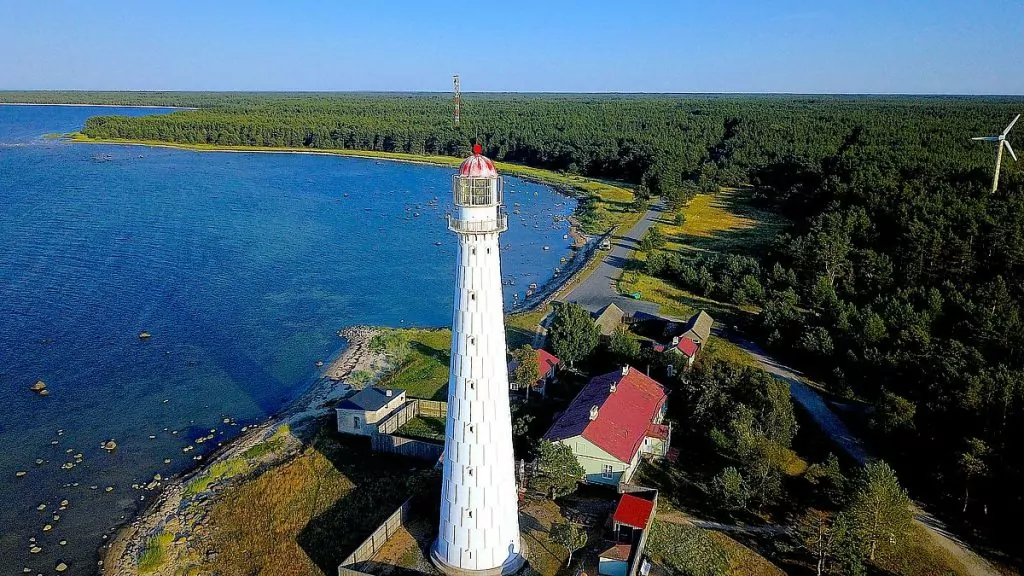
27. Learn about Swedish history on Dagö.
Dagö has a long Swedish history. One village is still called Rootsi (Sweden) and was once home to thousands of Swedes. The village of Röicks (Reigi) was the centre of Estonian Swedes, with around 80 farms and a church. Catherine II of Russia decided in 1781 that the Swedes would be deported to the village of Gammelsvenskby in today's Ukraine, and the Swedes were forced to gather their families, possessions and animals and walk all the way on foot. .
Today you can visit Korsberget (Ristimägi), a place of historical importance. Here the Swedes gathered to say a final prayer before emigrating. It was an emotional farewell to the place that had been their home for 400-500 years. Today, visitors create their own wooden crosses and place them on Korsberget to honour the Swedes.
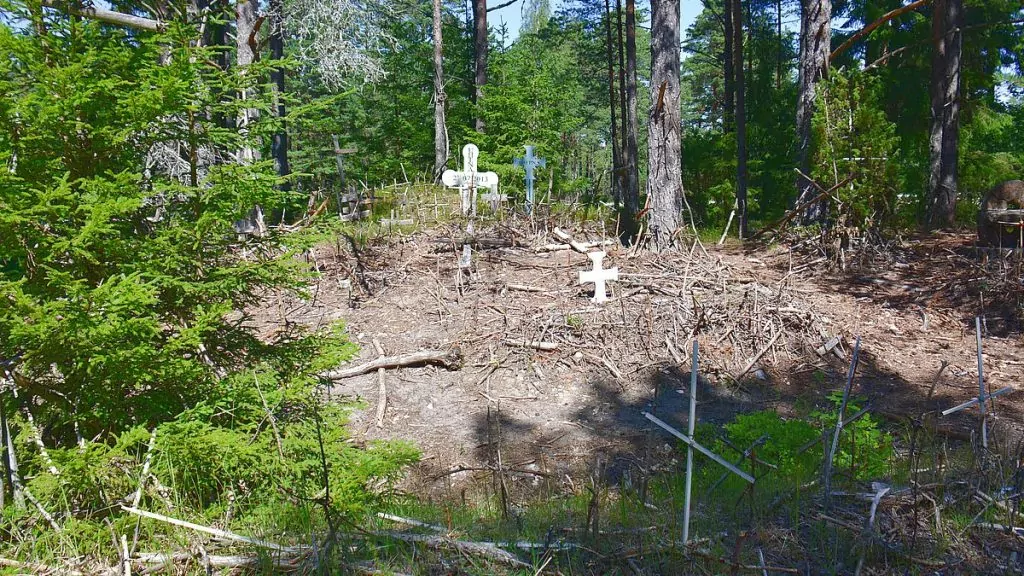
28. Have fun at Rummu quarry in Estonia
Rummu Quarry in Estonia is a unique place that offers a completely different sunbathing and swimming experience. Here you can enjoy swimming or diving around a sunken prison. The crystal-clear water, shimmering in green, has turned the area into a fascinating underwater museum and a holiday paradise.
Soviet prisoners mined Vasalemma marble here from the 1930s to the 1990s. When Estonia gained independence in 1991, the quarry was abandoned and the pumps were switched off. The water rose quickly and buildings, an excavator and materials were left behind. In the current lake you can dive, snorkel or glide around on a SUP board. There is also a restaurant, sauna and a high slag heap that can be climbed for great views.
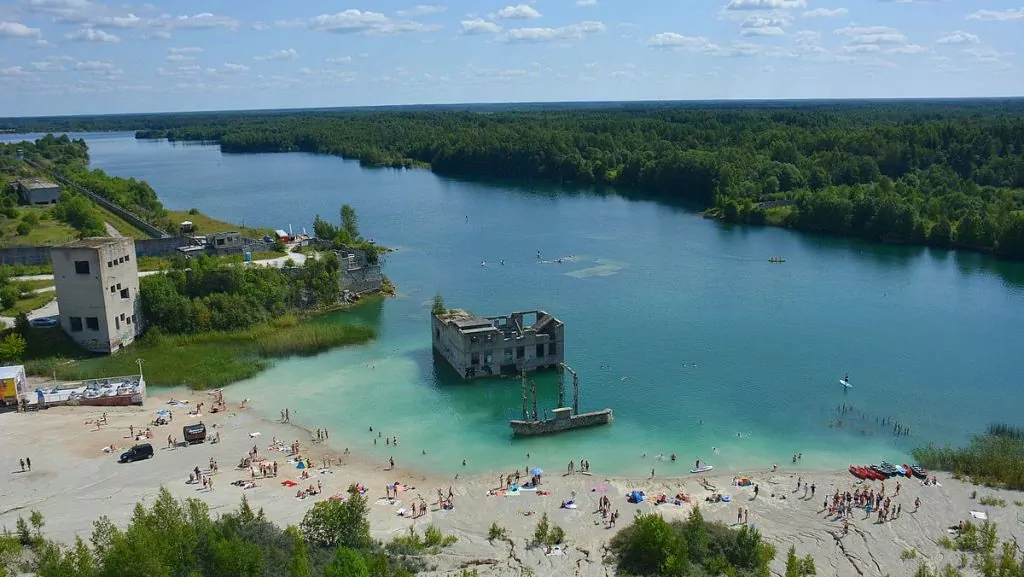
29. Discover amazing Haapsalu in Estonia
Haapsalu (Hapsal) is a picturesque wooden house town on the Estonian coast, offering a unique combination of spa luxury and simple charm reminiscent of Bullerbyn. It is perhaps no coincidence that Ilon Wikland, the famous illustrator of many of Astrid Lindgren's books, grew up here.
Ilon's Wonderland is in the centre of town and welcomes visitors. Other places you won't want to miss are the charming railway station, Haapsalu's 13th century bishop's castle, which also houses a museum, and the lovely seafront promenade.
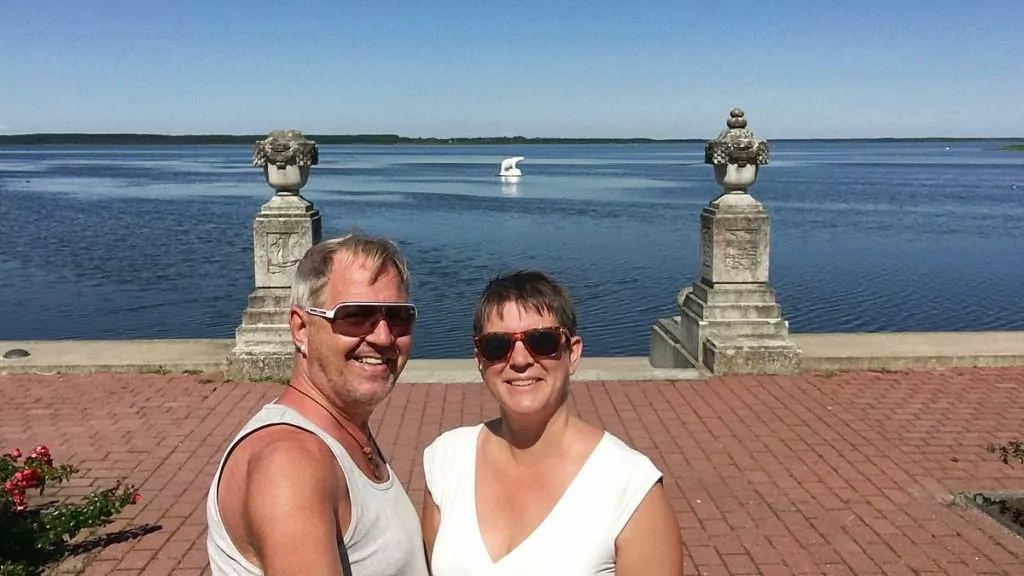
30. Camping in cosy Estonia
It is very easy to camp or free camp in Estonia with a motorhome, caravan or tent. It is easy to find free camping sites for overnight stays, and there are also plenty of organised campsites.

More suggestions on what to do in Estonia?
Do you have any other suggestions for what to see and do in Estonia? Please leave a comment in the comments section!
Lake Peipus in Estonia - village festivals, onions and old-timers
Lake Peipus in Estonia is located in the eastern part of the country and is known for its...
Ferry to Estonia - Tallink silja vs DFDS
Ferry to Estonia, which one to choose? On our last trip to Estonia, we tried two different ferry...
An excursion to Kadriorg Palace in Tallinn, Estonia
It's all over the place here! A few days ago we were in Malta and now we are in...
Kynö in Estonia - the island where women are in charge
In cooperation with the Estonian Tourist Board Kynö in Estonia is a small and very special island. It...
Motorhome holiday in Estonia - starting in Tallinn
We're finally off on a motorhome trip in Estonia, exploring the country for three weeks! We...
Guided tour of Tallinn - the Kalamaja neighbourhood
Today you can join a guided tour in Tallinn, Estonia! We love guided tours. When...
10 things to do in Tartu, Estonia
What to do in Tartu, Estonia? We spent three days in this...
The cliffs of Ontika in Estonia - and Oru Park in Toila
In collaboration with the Estonian Tourist Board The cliffs of Ontika in Estonia are dramatically steep rock faces that plunge into the...
Narva in Estonia - on the border with Russia
In cooperation with the Estonian Tourist Board Narva in Estonia is the EU's outpost against Russia, with the border crossing...
Tourest 2020 travel fair in Tallinn - travel destinations and delicacies
We have visited the Tourest 2020 travel fair in Tallinn, Estonia. Really fun and inspiring! The fair offers both ...
Travelling by motorhome in Estonia - all you need to know
What is it like travelling with a motorhome in Estonia? We have just returned home after barely...
Rakvere fortress in Estonia - history and spectacle
In cooperation with the Estonian Tourist Board Rakvere Fortress is located on a hill in the town of Rakvere in the north of...
Keila waterfall in Estonia - and a romantic park
In cooperation with the Estonian Tourist Board Keila Waterfall in Estonia is the country's third largest waterfall and is located...
Proto discovery workshop - experience centre in Tallinn
The Proto Discovery Workshop is an experience centre in Tallinn where you can discover and experience early technological developments,...
Ferry to Tallinn - what not to miss
If you follow our blog, you know that we travelled by ferry to Tallinn during the Easter holidays. We...
Rally Estonia in Tartu - a great festival of people
In cooperation with the Estonian Tourist Board Rally Estonia in Tartu is a great folk festival that attracts...
Lahemaa National Park in Estonia - nature and mansions
In cooperation with the Estonian Tourist Board Lahemaa National Park in Estonia is a large natural area that offers...
Dagö in Estonia - among lighthouses and Swedish history
In cooperation with the Estonian Tourist Board Dagö in Estonia is a green and scenic island, where...
Saaremaa in Estonia - the island of windmills
Saaremaa in Estonia is an island in the Baltic Sea the size of Gotland, known to all...
The highest mountain in the Baltics - Suur Munamägi in Estonia
In cooperation with the Estonian Tourist Board We have "climbed" the highest mountain in the Baltics - Suur Munamägi in Estonia....
2 good hotels in Tallinn, Estonia - luxury or colour?
We have now tried two different good hotels in Tallinn, Estonia. The first night we stayed ...
What to do in Tallinn - 30 sights and experiences
Looking for tips on things to see and do in Tallinn? We've visited Estonia...
Pärnu in Estonia - beaches, spas and villas
In cooperation with the Estonian Tourist Board Pärnu in Estonia is known for its beaches, spas and...
Haapsalu, Estonia - noise village charm on the coast
In collaboration with the Estonian Tourist Board Haapsalu in Estonia is a beautiful wooden town on the Estonian coast....
Facts about Estonia - 30 things you (might) not know
Here are the facts about Estonia - 30 things you (maybe) didn't know about the country. Estonia is...
Exploring the port of Tallinn, Estonia
One of the best things about travelling is discovery. Going on unplanned...
Cruise Stockholm - Tallinn with Victoria I
We have been on a cruise Stockholm - Tallinn with Victoria I from Tallink Silja Line. So...
Rummu quarry in Estonia - prison turned bathing paradise
In cooperation with the Estonian Tourist Board Rummu quarry in Estonia is a very different sun and bathing paradise,...
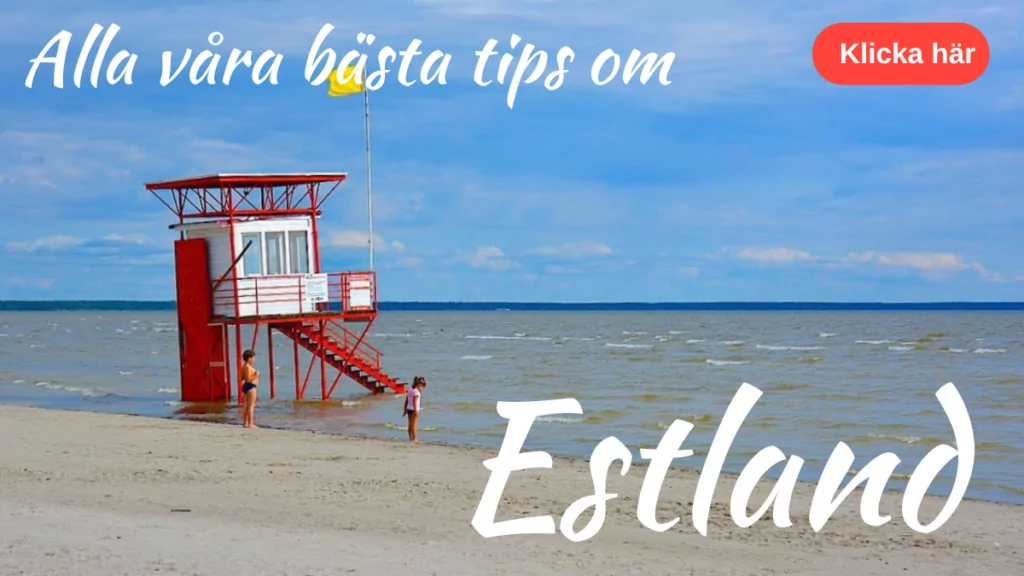
Things to see and do in Estonia - good to know before travelling
- Capital city: Tallinn
- Residents: More than 1.3 million (2021)
- Language: Estonian (English works fine in most places)
- Currency: Euro from 1 January 2023 (previously Kuna)
- National Day: 24 February
- Price mode: Prices are lower than in Sweden
- Time difference: Estonia is one hour ahead of Sweden
- Emergency number: 112
- El: As in Sweden
- FlightsThere are various flights to choose from. For example, there are direct flights from Stockholm to Tallinn.
- Car/caravan: Of course, you can also take your car or motorhome to Estonia. You can travel with Tallink-Silja or take the DFDS ferry Kapellskär - Paldiski.
Some more tips for things to do in Estonia
- Tallinn Card: Consider a Tallinn Card, valid for 1-3 days, which gives you free use of public transport and discounts on various attractions.
- Tallinn Song Festival: The festival is organised every five years and the next one will be in 2024. It is the largest amateur choir in the world, with around 30,000 people in the singer's field in Tallinn. The event attracts around 80,000 people and there is a procession of 10,000 in folk costume dancing.
- Christmas market in Tallinn: And don't forget the fantastic medieval-style Christmas market in Tallinn every year.

